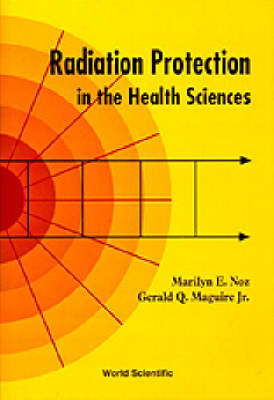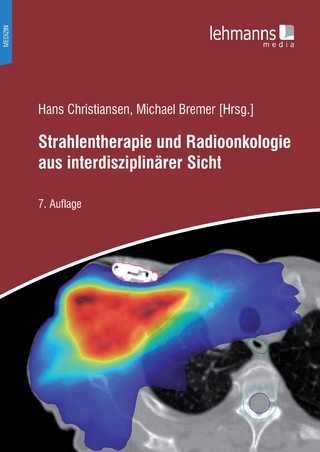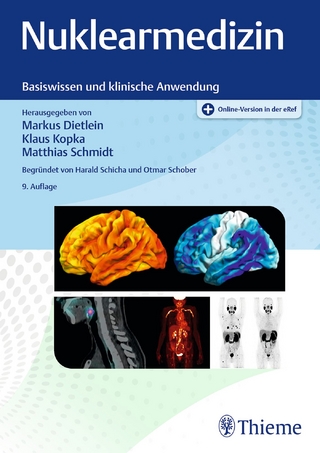
Radiation Protection In The Health Sciences
Seiten
1995
World Scientific Publishing Co Pte Ltd (Verlag)
978-981-02-2406-6 (ISBN)
World Scientific Publishing Co Pte Ltd (Verlag)
978-981-02-2406-6 (ISBN)
This text takes a practical approach to presenting a source of radiation protection material for anyone working in the areas of radiological and health sciences. It is suitable for students in radiologic and nuclear medicine, for residents, or for medical health physicists.
This book takes a very practical approach to presenting a readable source of radiation protection material for anyone working in the areas of radiological and health sciences. It is a suitable text on the subject for students preparing for careers as radiologic and nuclear medicine technologists, for residents, and for medical health physicists. It is an good reference guide for anyone using radiation in the health field, including physicians.The first seven chapters consist of radiation protection principles which have general application. These include a discussion of instruments used in the field of radiation protection both for area and personnel monitoring which is rarely found elsewhere. Additionally, a description is given of SI units for radioactivity, exposure, absorbed dose, kerma and effective/equivalent dose as well as risk assessment and the current recommendations of the International Commission on Radiation Protection (ICRP) and the United States National Council on Radiation Protection and Measurements (NCRP). The basic radiation protection principles of time, distance and shielding are also discussed here. The next three chapters are concerned with the practical implementation in the workplace of the principles discussed earlier, including a chapter on specific recommendations for the safe use of common sources of radiation, the laws governing the use of these sources and the calculation of shielding required for these various sources of radiation. The last two chapters detail the methods of calculating absorbed dose from internally deposited radionuclides (including a very lucid discussion of the method proposed by the Medical Internal Radiation Dose (MIRD) Committee of the Society of Nuclear Medicine) and external radiation (including a discussion of the Bragg-Gray method).Each chapter has self-assessment review questions and problems as a useful aid to retaining important information. The four appendices discuss the current status of the units and their current and former usage as well as the concepts of logarithms. A complete glossary and set of references are also included. Answers to the problems are provided at the end of the book.
This book takes a very practical approach to presenting a readable source of radiation protection material for anyone working in the areas of radiological and health sciences. It is a suitable text on the subject for students preparing for careers as radiologic and nuclear medicine technologists, for residents, and for medical health physicists. It is an good reference guide for anyone using radiation in the health field, including physicians.The first seven chapters consist of radiation protection principles which have general application. These include a discussion of instruments used in the field of radiation protection both for area and personnel monitoring which is rarely found elsewhere. Additionally, a description is given of SI units for radioactivity, exposure, absorbed dose, kerma and effective/equivalent dose as well as risk assessment and the current recommendations of the International Commission on Radiation Protection (ICRP) and the United States National Council on Radiation Protection and Measurements (NCRP). The basic radiation protection principles of time, distance and shielding are also discussed here. The next three chapters are concerned with the practical implementation in the workplace of the principles discussed earlier, including a chapter on specific recommendations for the safe use of common sources of radiation, the laws governing the use of these sources and the calculation of shielding required for these various sources of radiation. The last two chapters detail the methods of calculating absorbed dose from internally deposited radionuclides (including a very lucid discussion of the method proposed by the Medical Internal Radiation Dose (MIRD) Committee of the Society of Nuclear Medicine) and external radiation (including a discussion of the Bragg-Gray method).Each chapter has self-assessment review questions and problems as a useful aid to retaining important information. The four appendices discuss the current status of the units and their current and former usage as well as the concepts of logarithms. A complete glossary and set of references are also included. Answers to the problems are provided at the end of the book.
Fundamental concepts; detectors; units associated with radiation protection; biological effects and effective/equivalent dose limits; common survey and calibration instruments; personnel monitors; practical means of radiation protection; principles governing specific devices - good working habits; radionuclides and the law; shielding from external radiation; internal dosimetry; absorbed dose from external photons; appendices - the units of physics, the Roentgen and the Rad, logarithms, Greek alphabet.
| Erscheint lt. Verlag | 1.12.1995 |
|---|---|
| Verlagsort | Singapore |
| Sprache | englisch |
| Themenwelt | Medizin / Pharmazie ► Medizinische Fachgebiete ► Arbeits- / Sozial- / Umweltmedizin |
| Medizinische Fachgebiete ► Radiologie / Bildgebende Verfahren ► Nuklearmedizin | |
| Medizinische Fachgebiete ► Radiologie / Bildgebende Verfahren ► Radiologie | |
| ISBN-10 | 981-02-2406-0 / 9810224060 |
| ISBN-13 | 978-981-02-2406-6 / 9789810224066 |
| Zustand | Neuware |
| Haben Sie eine Frage zum Produkt? |
Mehr entdecken
aus dem Bereich
aus dem Bereich
Buch | Softcover (2022)
Lehmanns Media (Verlag)
39,95 €
Lehrbuch für Breast Care Nurses und Fachpersonen in der Onkologie
Buch | Hardcover (2020)
Hogrefe (Verlag)
50,00 €


